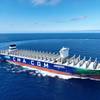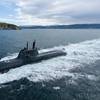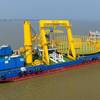Building the Next Generation of Shipbuilders
Peter Kim was a new graduate of UBC’s Electrical Engineering program when he saw a posting for an exciting job at Seaspan Shipyards. Even though he did not quite meet the experience requirements for the position – “they were looking for someone with five plus years, I had two years as a co-op student,” laughs Peter – he decided to apply anyway. Long story short, he got the job; is closing in on four years at Seaspan as a Junior Production Engineer; and, it’s fair to say that neither Peter nor Seaspan have looked back.
Peter has barely seen the time go by. “With three National Shipbuilding Strategy (NSS) projects in the yard at once, we have many very interesting challenges that I really enjoy,” he explains. “And the beauty of working at a shipyard is that I get to see the results of my efforts as ship construction progresses. When a new vessel launches into the water, I have the satisfaction of knowing that our team’s work helped make it better,” Peter adds with a grin.
Peter works as part of the five-member Performance Improvement Team. His role is focused on improving the quality and efficiency of the engineering and production of ships.
One such improvement was a recent month-long training for some of Seaspan’s trades and apprentices in a specialized process called Line Heating. It’s a specialized process which, rather than using a press machine to form the steel plates used in hull construction, uses a heating torch to bend and shape them. Peter explains that since ships have many different curvatures on their hull, being able to line heat and form plates, in addition to using the press machine, increases efficiency and quality.
“One of our shipbuilding experts, Joseph Park, had identified Line Heating as a key opportunity for improvement. A Production Manager was trying to line it up and having a hard time, so Mike Hevey [Director of Performance Improvement] asked me to pitch in and help.”
Peter prepared a proposal and made a presentation to the Horizontal Engineering and Program Plan (HEPP) team. HEPP, a program sponsored by the Government of Canada that seeks to increase shipbuilding efficiency, is part of how the NSS is shaping and securing the future of Canada’s shipbuilding industry.
Getting the proposal approved was just the first step of many, and Peter managed them all: from finding an expert (Tomonori Tsugita, of Japan, a country renowned in the industry for its Line Heating expertise); to ensuring that the forming shop was ready; to obtaining the special heating torches for line heating; to helping Mr. Tsugita and his interpreter deliver the training.
It was a huge success, with nine tradespeople and apprentices receiving a certification. Further phases of the program are scheduled for the fall and spring. Peter is pleased and proud it went so well – and glad to play a role improving how ships are built for Canada.
With this part of the project behind him, Peter is looking forward to the next challenge.














